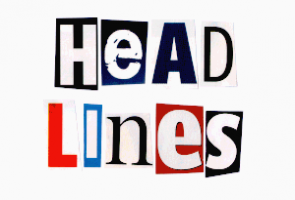It should come as no surprise that I place an incredibly high value on powerful, compelling, well-written copy. I think it is the responsibility of every good marketer or business owner to paint the best possible picture of their product, idea, or brand at all times. I also think that we who operate content writing services creating all those marketing plans have an equal weight of responsibility. In short, our objective is simple: to create the best possible picture of your brand in the minds of potential and current customers with words, images, and so on.
The vast majority of the people in front of whom you put those magnificently crafted blogs, articles, sales letters, press releases, informational articles, and videos will never read or pay attention to it. Over 90% of your copy is going to go unread. Most people will opt to “skip this ad” after 5 seconds and so on.
You only ever have the hope of capturing the attention of a small percentage of your total reader/viewership, and that has been a fact of marketing since marketing became a thing. Timing and placement are vital to the success of your copy, and this principle is no truer than it is when applied to headlines.
Where and when your headlines show up in your content will have a huge impact on the overall percentage of people who both notice them and, in turn, decide to take a closer look by clicking through to a blog, article, or landing page. Of course, when they get there the entire cycle repeats. It’s the small bursts of information and a quality of them that will determine just how far someone is will to go when interacting with your brand. This is why I believe that all of your headlines should contain these three vital elements and why you should be making some changes if they do not.
Winning Headlines Are Brief and Concise
If your headlines are more than seven words long, it might be time to evaluate whether you could stand to drop a little of that baggage. Seriously, if your headline is more than seven words long, it could probably be tighter. Longer than 10 words? We really need to talk…
There are so many things vying for your readers’ attention that you have to communicate instantly and effectively that yours is the most straightforward, concise, and compelling voice in your industry or niche. You do that by creating short, tight headlines that either mention a pain point or straight up offer a solution for it. If you can do both in about seven words, you will edge out ahead of a huge percentage of your competition.
Winning Headlines Are Compelling
Far too many times, marketing headlines fixate on the “what” when they should be zeroing in on the “why.” The better reason you give people to click through, the more will. As I’ve said many times before: People don’t want to hear about your product. They want to hear about what interacting with your product will do for them.
Good headlines have an either direct or indirect emotional angle. For the sake of argument, let’s look at the most recent presidential race here in the States. When you look at the headlines, there was very little in the way of telling us to vote for one or the other.
The vast majority of headlines either played at the emotions of the reader or steered directly into some form of controversy. Is there anything controversial about either your product or anything your product touches? If so, your headline needs to address it.
The exception to this rule, of course, would be if that controversy paints your product in a bad light. You can deal with that within the body of the content if you think it would be beneficial, but never call attention to it in a headline. Remember, we’re talking about things that play at the emotions of the reader. You want them reacting negatively to the problem and positively to the solution.
Winning Headlines Promise Value
There is a fine balance here between sensationalism and believability. It’s all right to sensationalize your product to an extent, but there are things to avoid when doing so. For starters, ditch the superlatives. Ditto any adjective that looks like you’re using it to amplify your message as opposed to enhancing it.
The other danger here comes when we equate value with sales language. You don’t want your headline to attempt to sell anything beyond the idea that clicking through or reading the paragraphs that follow would be a good idea. The meat of the message can’t be communicated in seven words or less, so focus on what can: a promise that the time, effort, and reward of clicking through (or reading more) will be worthwhile.
Final takeaway: Your headlines are the most important elements to your copy. They give the rest of your content a fighting chance to be seen, and they help encourage interaction with your brand better than anything else when used correctly.
Also keep in mind that headlines designed for newsletters and sales pages will have different purposes, as will the ones you write (or commission) for social media. Knowing your audience and how they respond at each stage of the buying process is key to the success of your headline.
